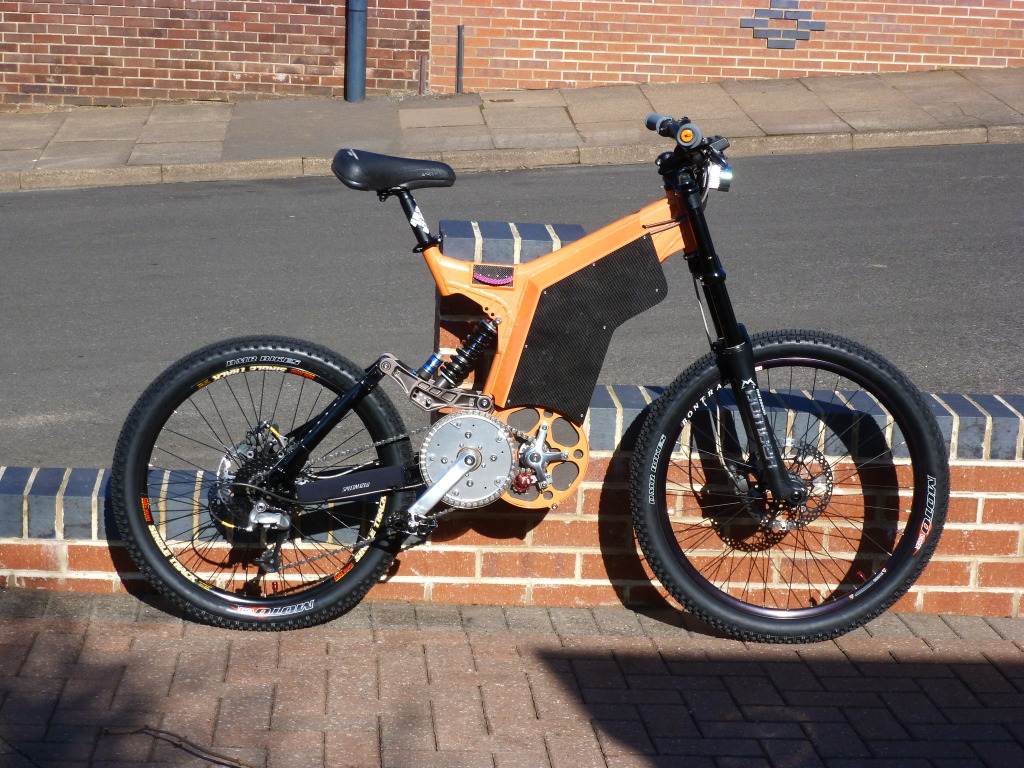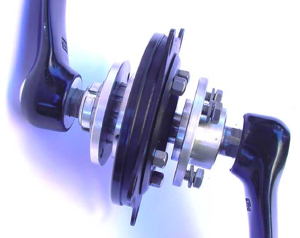macribs
10 MW
- Joined
- Jul 22, 2014
- Messages
- 3,702
I've just discovered the RC motors, and more specific the build by recumpence. It seems those RC motors are really high spinning beasts with amazing powers. Delivering efficiencies from 70% around 1/10 of max RPM and tops out at around 93% at full RPM.
I saw another thread about a dog shifter here, will those work well with Matt's crazy RC motors? Seems it can take 2 motors......pneumatic gear changes. Just thinking of the svosj sound makes me grin.
Don't know if anyone tried to use a gearbox for high powered e-bikes? Will they work well and have acceptable longevity?
Or would it be possible to use a jackshaft with an enclosed schlumpf speed drive inside? Seems those are build tough as nails. And handles several hundreds lbs of torque. Have anyone here used a schlumpf speed drive for a jackshaft?
I am trying to best understand how to get most usable power from RC motors, for both low end torque for mind blowing acceleration yet be able to speed of more then 40 mph.
In my very first thread here I got several comments about mid motors, but I was still so new here that all I knew about mid motors was the big names like bosch etc - and their low power motors. One even mentioned mid motor and dog shift (John in CR maybe?). But I thought that was useless cause I had not seen mid motors with more then 750w motors. It sounded just boring.
Then I now realize those RC motors are build like tanks. Withstands 200 degrees Celsius of temp, where Cro and Crys start to melt around 90-120 degree Celsius. Not to mention those big DD hubs puts a significant unsprung mass in your rear tire. If the RC route is not desirable one could use a regular DD hub as done by Simon. His build was a true beauty. And of sourcing motor from 4motus one could even get high powered water cooled motor.

So what you guys think. Twin RC motors or singel water cooled Crystalyte 4 series? What is more fun and more durable?
I saw another thread about a dog shifter here, will those work well with Matt's crazy RC motors? Seems it can take 2 motors......pneumatic gear changes. Just thinking of the svosj sound makes me grin.
Don't know if anyone tried to use a gearbox for high powered e-bikes? Will they work well and have acceptable longevity?
Or would it be possible to use a jackshaft with an enclosed schlumpf speed drive inside? Seems those are build tough as nails. And handles several hundreds lbs of torque. Have anyone here used a schlumpf speed drive for a jackshaft?
I am trying to best understand how to get most usable power from RC motors, for both low end torque for mind blowing acceleration yet be able to speed of more then 40 mph.
In my very first thread here I got several comments about mid motors, but I was still so new here that all I knew about mid motors was the big names like bosch etc - and their low power motors. One even mentioned mid motor and dog shift (John in CR maybe?). But I thought that was useless cause I had not seen mid motors with more then 750w motors. It sounded just boring.
Then I now realize those RC motors are build like tanks. Withstands 200 degrees Celsius of temp, where Cro and Crys start to melt around 90-120 degree Celsius. Not to mention those big DD hubs puts a significant unsprung mass in your rear tire. If the RC route is not desirable one could use a regular DD hub as done by Simon. His build was a true beauty. And of sourcing motor from 4motus one could even get high powered water cooled motor.

So what you guys think. Twin RC motors or singel water cooled Crystalyte 4 series? What is more fun and more durable?



